The purpose of my last post is to fulfill a requirement for a class assignment at the University of Utah. I will be addressing the learning outcomes I have achieved over this spring semester in my PRT 5610 course. First I will address the IR requirement and then the CW requirement.
International Requirement: Every individual has thier own perspective on certain topics. When it comes to tourism there are a lot of factors to take into consideration when forming your own perspective. To cover the international requirement learning objective I will be discussing some of the cross-border phenomena that influence the international tourism system. Some borders I am refering to include language, cultural, economic and political influences. I will discuss more specifically my perspective of the influences of language and culture on international tourism. So how does language influence the international tourism system? One issue to think about with intercultural communication is the growth of globalizaton and immigration. Globalization produces a demand for cross-cultural awareness in many different areas of language. This helps with international tourism because if the local people have to accomodate for globalization they will be more aware of other cultures and become acustomed to catering to travelers. Some international differences in communication to consider include when to talk, what is proper to say, flow of conversation including pauses and filler words, the degree of formality we address people, and the degree of indirectness or directness. Another consideration with language are social group interactions and which type of communication is appropriate in certain settings. I think that language is the number one thing that will shape a persons perspective on a culture. Because of this, the influence of language on international tourism is huge. Language shapes a cultures traditions and way of life. Think about visiting China or somewhere that is very foreign to western culture. China is a beautiful place that has completely different values and beliefs than we do here in America. They have many customs that are very foreign to an average American. This difference in language and culture influences tourism by either attracting more tourists or detering them. People being deterred from visiting China might be a result of the language barrier and the difference in traditions and customs. Many people have a fear with the unknown. It is easy to understand this perspective and because of how foreign the culture is to these individuals it may be frightening for them. The problem is that although many people may have a desire to go to China they might be aprehensive about the language and not being able to get around. There is a fear that if something happened to them while traveling they won't get the desired treatment that they would in the comfort of their own country and culture. On the other end of the spectrum is that because China is so unique and different from what we have in America this might attract certain travelers. The problems this has for the industry is that many believe they will not be able to make a trip comfortable. In order to go they have to book a packaged tour with a professional guide where they limit themselves to the security of international hotel chains. By not using the local amenities it leads to leakage because it is letting money leave the country rather than staying and circulating the local economy.
Communication Writing Requirement: Throughout the course of PRT 5610 I have had the opportunity to improve my writing by effectively using technology and online resources. As you may have read my previous posts, I have compiled an online blog on the endangerment of great white sharks. My most recent post is a picture of the infographic I created to help raise awareness on this issue. Creating this infographic required using many resources including, Piktochart, photographs from the internet, and information from online experts. This particular assignment required me to broaden my communication tactics by using something other than just words to portray a message. The infographic in particular is unique and it really demonstrates how I was able to utilize this online resource to improve my writing. I believe that being able to communicate in more ways than just strictly writing is crucial in our culture. In our fast paced technology driven world many messages need to be quick and catchy to get any attention from people. By using an infographic I am able to attract a larger target audience and create more appeal toward the issue on the endangerment of great whites. This was not the only assignment that helped broaden my perspective and improve the quality of my written communication. I wrote another post on one of the sites on UNESCO's list of endangered places. For this assignment I made parallel comparisons with the cultural heritage site of the Chimu Kingdom in Peru and an organization that focuses on helping the great white sharks called Monterey Bay Aquarium. I was able to show how the Aquarium successfully meets all five principles for cultural heritage tourism.
As you start from the beginning of my blog you will see how I have improved throughout the semester in my writing and utilization of pictures, videos, and information from the web.
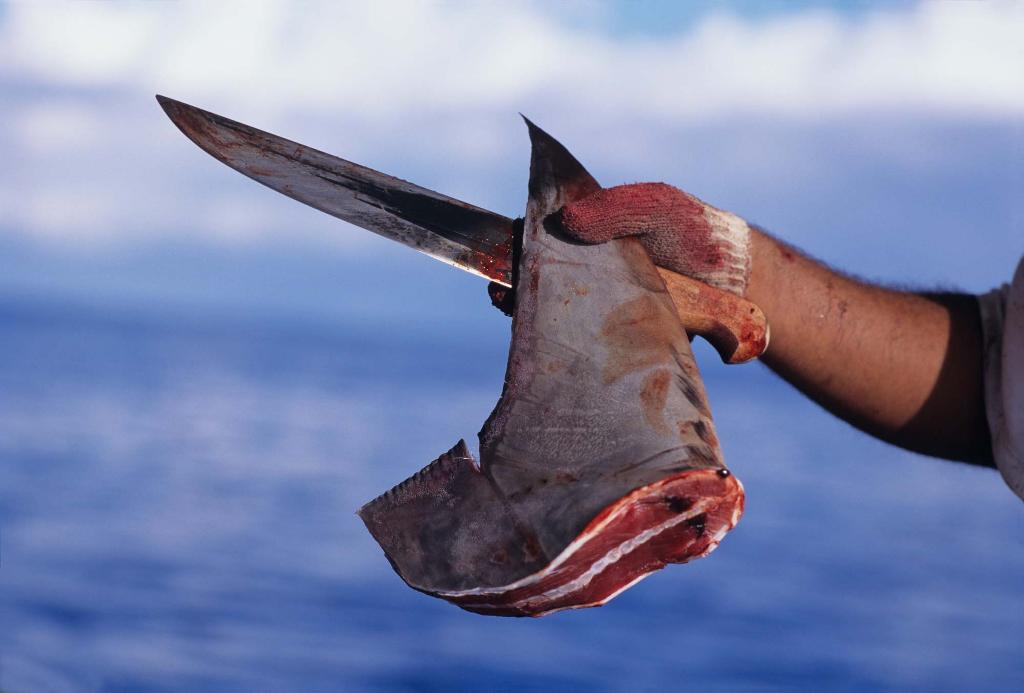 This is the fin of a Great White Shark (Picture courtousy of Bing Image) Before you continue, you must watch this video.Can you believe sharks have been around for more than 400 million years? They are a critical part of our marine ecosystem because they are at the top of the food chain. Every day over 200,000 sharks are killed for their fins. Once the fin is cut from the shark, the carcass is then thrown back into the ocean. The shark is usually still alive when it is tossed back but is unable to swim so it sinks to the bottom of the ocean and is eaten by other fish. The great white shark was added to the endangered species list because its population has dropped due to unregulated trade and excessive hunting for shark fins. Can you guess the largest trading center for shark fins? Well it is Hong Kong. Shark fin soup is a delicacy in China and because of China’s economy growth; more people have become wealthy enough to eat more shark fin soup. This has caused the demand for shark fins to hit the roof which has ultimately led to a decreased shark population. If fact shark specialists estimate that 100 million sharks are killed annually for their fins because one pound of shark fin can sell for up to $300. That is 190 sharks per minute! Shark finning is a global problem that specialists estimate will cause extinction within 10 years. Source You might be asking yourself what is the big deal? The shark is an apex predator that resides at the top of the oceanic food chain. Apex predators have a vital role in maintaining the health and balance of their ecosystems. A decrease in the apex predator of the ocean threatens the stability of the marine ecosystem. Essentially, disturbing this balance will ultimately cause a potential threat to oceans as a support for human life. Basically, life on land depends on life underwater to survive. I urge you to take action today! The first thing you can do to make a difference is SAY NO TO SAHRK FIN SOUP. Refuse it at restaurants and encourage your friends to do the same. You can also donate to help save the sharks here. Your actions will determine their future!Please share one of these video with your friends and have them pass it along to raise awareness of this issue. 90% of sharks have been fished out of the ocean. | When the buying stops, the finning will too! |
 Chan Chan is the capital of the Chimu Kingdom from the 15th century. Shortly after reaching its pinnacle point, it fell to the Incas. Chan Chan is located in the valley of Moche in Peru and was the largest structural city made of mud and sand in pre-Columbian America. The layout of this city is a reflection of the strict political and social strategy that was in place. The structure is divided into 9 large rectangular complexes known as citadels and was how they were divided. Each citadel included buildings such as temples, store houses and reservoirs. The planning of this city is a masterpiece of town planning. Their ability for zoning and use of inhabited space is a true testimony of the Chimu Kingdoms ability to express their political and social ideal with such clarity. Although the remaining area is significantly less than the original, Chan Chan has retained all the elements that give it the outstanding value that give it significance. Due to decay from the natural elements, ongoing maintenance is performed to prevent total deterioration. Unfortunately the visual integrity of the site is negatively impacted by the local farming and agriculture. The area around Chan Chan has been developed as much to include infrastructure, animal food plants, a highway that cuts the property in two. Protection & Management: The main agency in charge of conserving the Chan Chan is the Ministry of Culture in Peru. They collaborate with national, regional and local authorities to implement actions necessary for any illegal occupation of the property. The property is protected by national laws and verdicts but there are still some long standing issues with land occupancy and relocation of the illegal settlers. There are still a lot of regulatory procedures being established with the local municipality. In 1986 (same year I was born), the property was placed on the world heritage in danger list because of its vulnerability to the climatic effects from the weather. It was also being threatened by proposed construction of road crossings. There are a couple principles for cultural heritage tourism that have not been managed properly in conservation of the Chimu Kingdom. The first is to protect and preserve resources for future generations. I do not think sufficient efforts to conserve this property have been taken. There have been issues treasure hunters since the 1700’s and they still exist today in spite of the legislation against it. Something that can be done about the conservation is to stop any excavating that is currently happening. Another option would be to build a structure around it so it is enclosed and protected from the weather. This was done in China with the great Terra Cotta Warriors. An effective risk management plan is also needed to address both the social and natural threats to the property. Second principle I think is finding the fit between the community and tourism. I don’t believe the community has been involved in helping shape the tourism efforts. Still today, mapping of the sight and archeological exploration has just begun. I think that by educating the locals on the important significance this has on their culture will help to get them involved in the conservation efforts. http://whc.unesco.org/en/list/366
In a parallel comparison I wanted to introduce the Monterey Bay Aquarium and their efforts toward Great White Shark Conservation. This organization has successfully met all five principles for cultural heritage tourism. · Collaborate - With their lend support link they rely on support from corporations, and individuals to work together and not alone in their conservation efforts. · Fit between community and tourism – In order to allow the community to be involved in shaping the tourism efforts the Monterey Bay Aquarium employs local tour operators and they offer military discounts. · Make sites and programs come alive – by allowing tours, adventures, daily shows and activities visitors can become more than engaged in creating a memorable experience. · Focus on authenticity and quality – Monterey Bay has a few tours that maintain the authenticity and quality of the travelers experience. With the feeding frenzy tour travelers are allowed to fee the fish from a balcony that stands over the pool. Also the shark tour allows travelers to discover the secrets of many shark species. · Preserve and Protect resources – With a save the oceans tab, the aquarium has a variety of areas in which a person can help preserve the ocean life. One of these include research and conservation with many tools to help people learn how they can take part in the conservation of these irreplaceable resources. http://www.montereybayaquarium.org/cr/cr_whiteshark/whiteshark_conservation.aspx | |
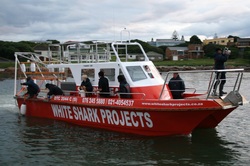 Dive on in with the sharks! Contributing to the local economy is a crucial element that should be included in every tour operation. When you travel to new places your carbon footprint should do everything to give back to the community/economy of the country visited. In Gansbaai South Africa, the white shark projects will allow you to do just that. They are a white shark dive organization that will allow divers or non-divers to observe the most feared creature on the planet. While creating an awesome experience for you, White Shark Projects also revolves around the 5 cornerstones of fair trade which include: Fair Working Conditions: White Shark Projects employs 21 people with a range of qualifications. Each employee is taken care of and thoroughly enjoys their job because it enables them to work with and help these creatures. A quote from Gerald, one of the Dive Skippers said, "Changing people’s perspective about the Great White Shark and introducing people to this mysterious creature is what fuels my passion." Fair Prices: The price for a dive excursion with the sharks costs $450 per person. While this may seem expensive, it is actually very reasonable. Diving with sharks does not come cheap. After shopping around other companies I could not find anything for less that $900 and up to $3,200. This dive includes your transportation, breakfast, a lecture on the Great White Shark, all your diving gear, the dive, lunch, and a DVD of your trip. I would say that is a pretty fair price.Integration Into The Local Economy and Regional Development: The White Shark Project reaches out to the community by helping children help themselves. A program called Swop Shop combines conservation, social improvement, and education. The Masekhane children collect bottles, tins, plastics and other recyclables and bring them in bags to the White Shark ‘Swop Shop’. In return, the children earn buying points that they spend in the shop. The shop carries only worthwhile items such as hygiene products, stationary, clothing, and food basics. This allows the children to learn the value of caring for the environment while helping their families meet basic needs. Fair Trade Partnerships Between All Actors in Tourism: Because you must travel to South Africa for this excursion, everyone who participates is most likely staying for at least a week. This gives them opportunity to spend money in the community and at local businesses. Sustainable Resource Use and Environmental Justice: The dive site is 2 hours from the city's center and the tour offers a luxury bus ride. This this is a more eco friendly approach because it prevents extra exhaust from individual cars that would burn up the environment more.
Visit them at: http://www.whitesharkprojects.co.zaThe White Shark Projects is in cooperation with: http://www.sharkconservancy.org/index.htmlCheck out the Video below!
 Meet the Shark Warriors Ecotourism is a great way for a person to be involved in a great cause. The Shark Warriors Program is a wonderful organization that will allow you a chance to help the great white sharks. It is a volunteer, research, ecotourism opportunity in Mossel Bay South Africa. The ultimate goals of the program are education, public awareness, and advances in conservation efforts. Three principles that the shark warriors program promotes ecotourism include: - It should involve education among all parties- local communities, government, nongovernmental organizations, industry, and tourists.
- Ensure that the long term benefits-to the resource, to the local community, and to industry (benefits may be conservation, scientific, social, or economic).
- It should provide first-hand, participatory, and enlightening experiences
The company is owned by Craig Ferreira and Christo Kruger. Craig has conducted many research projects including some of the early research that involved his father Theo. He also published two books on the Great White Shark. Craig travels around the world to educate others about this species. The shark warriors program is partnered with one of the top white shark research organizations called Oceans Research. Oceans research also promotes education and offers classes for participants to work toward conservation efforts. As a participant in the program you will be involved first-hand in research and data collection. You will experience cage diving with the oceans greatest predator. There are also opportunities for community education, environmental conservation, Oceans Research lectures and courses. Entering the domain of the oceans greatest predator may sound pretty scary, but with a cage of steel, you should be safe...Hopefully! Find the Shark Warriors Program here!
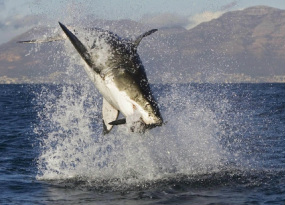 How can we save this species? The Great White Shark has many names including; Jaws, white pointer, white death and it is scientifically known as Carcharodon Carcharias. White Sharks, are the largest and most prevelant predatory fish in the ocean and can weigh up to 5000 pounds. They develop in size until about 15 years and have a life span up to 30 years. These sharks are typically found in all major oceans off the costal surface. They survive in water temperatures ranging from 54-75 °F. You might identify a white shark by its white underside and grey dorsal (fin) side. Oh, and did I forget to mention the enormous mouth lined with rows of serrated teeth? Being such an incredible predator, you may wonder how such a creature could be endangered. Join me next week to find out more about the endangerment of the great white shark.
|


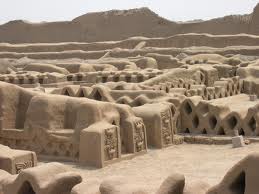
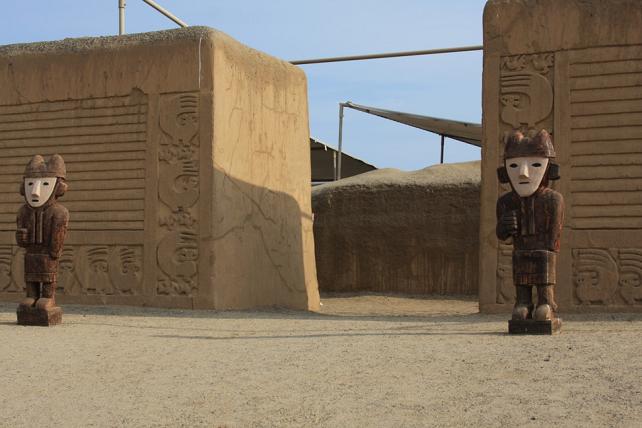
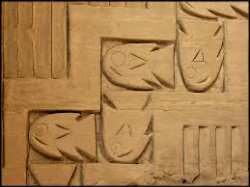


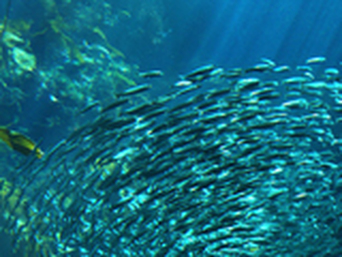

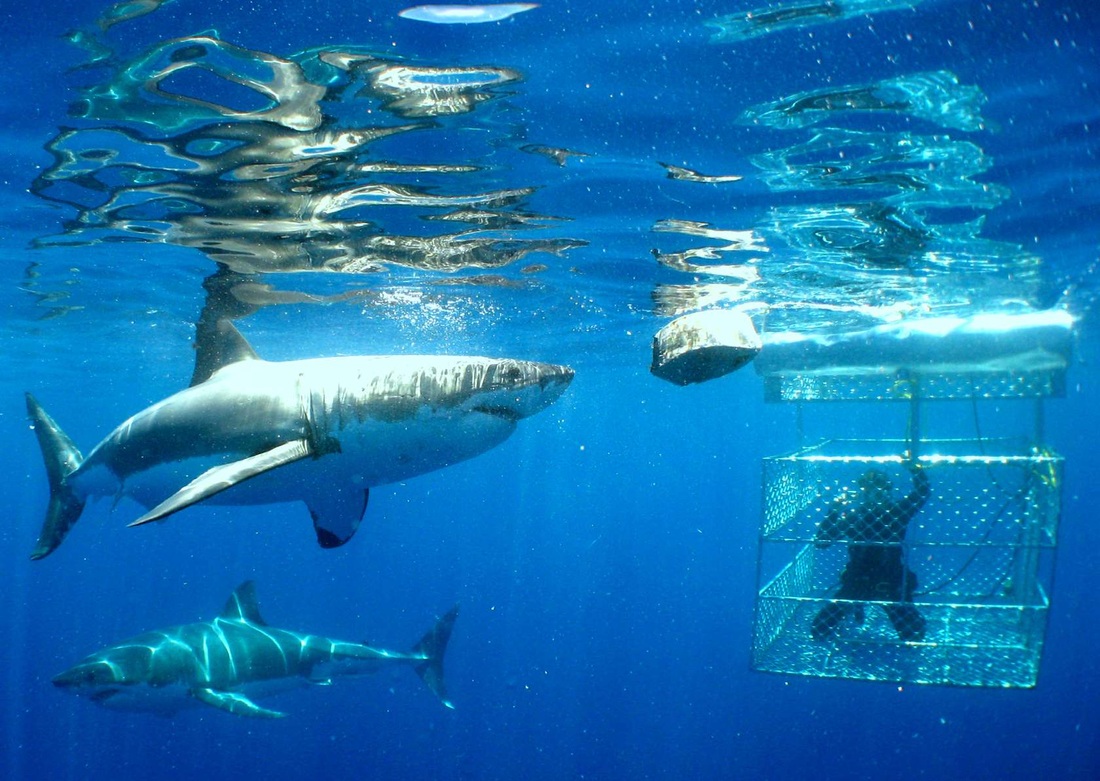



 RSS Feed
RSS Feed